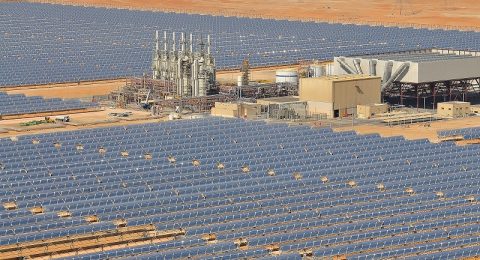The world faces two unprecedented challenges: stopping reliance on fossil fuels and reducing emissions. Yet, even if we stop all emissions today, the world will exceed the 1.5 degree warming threshold outlined by the United Nations given that carbon is still in the atmosphere. Thus, carbon dioxide removal (CDR) alongside rapid emissions reductions is necessary.
“To mitigate climate change, we need to remove carbon dioxide from the atmosphere at a level between 10 billion and 20 billion metric tons per year,” said senior author Gaurav Sant, director of the University of California, Los Angeles (UCLA) Institute for Carbon Management.
Equatic is one of the technologies that address the issue of carbon emissions by CDR in addition to producing green hydrogen, a clean fuel, using a single, ocean-based process. Instead of directly capturing atmospheric carbon dioxide, Equatic technology would extract it from seawater, enabling the seawater to absorb more.
The ocean holds 60 times more carbon than the atmosphere and absorbs almost 27% of carbon dioxide (CO₂) emissions from human activities, according to Surface Ocean CO2 Atlas (SOCAT) 2023 report. As atmospheric CO2 levels increase, so do the CO2 levels in the ocean, leading to accelerated sea level rise, disruption of marine ecosystems and ocean acidification that endangers marine organisms and ocean health.
“This technology can electrochemically enhance and restore the oceans’ capacity for carbon dioxide removal from the atmosphere at a globally relevant scale, thereby mitigating ongoing and accelerating climate change,” said Sant.
According to Sanders, Equatic’s approach has advantages over many others. There’s no need for CO2 stripping, transportation, and geological storage. The company can also construct coastal facilities without requiring the rock structure for injecting CO2.
The Process
In 2021, Gaurav Sant and another six fellow researchers from UCLA proposed a dupped single-step carbon sequestration and storage (sCS2,) concept in a paper, published in the journal ACS Sustainable Chemistry & Engineering. This concept was later called Equatic technology.
The seawater would flow through a mesh that allows an electrical charge to pass into the water, rendering it alkaline. This kicks off a set of chemical reactions that ultimately combine dissolved carbon dioxide with calcium and magnesium native to seawater, producing limestone and magnesite by a process similar to how seashells form.
The seawater that flows out would then be depleted of dissolved carbon dioxide and ready to take up more. A co-product of the reaction, besides minerals, is hydrogen, which is a clean fuel.
“Durable, safe and permanent storage is the premise of our solution,” said first author Erika Callagon La Plante, a former UCLA assistant project scientist who is currently an assistant professor at the University of Texas at Arlington.
The team carried out detailed analyses of the material and energy inputs and the costs required to realize their concept, as well as what to do with the byproducts. Unsurprisingly, given the enormous magnitude of the carbon challenge, they estimate that it would take nearly 1,800 sCS2 plants to immobilize 10 billion metric tons of carbon dioxide each year, with a cost in the trillions of dollars.
Equatic expects to remove 100,000 tons of CO2 every year by 2026 and then rapidly increase that amount to millions of tons by 2028, while also bringing down the cost of the process to under $100 per ton of CO2 removed. Moreover, the company expects to generate hydrogen for $1 per kilogram that it can sell or use to help power Equatic’s operations.
From Pilot to Commercialization
This approach has garnered some investments from the Grantham Foundation, Chan Zuckerberg Initiative, Singapore’s Temasek Foundation and U.S. Energy Department, which have contributed $30 million so.
With these investments, Equatic worked on two small pilot facilities to prove the approach works: one in Los Angeles and one in Singapore. Each can remove 100 kilograms of CO2 and make a few kilograms of hydrogen daily.
In partnership with Eco Engineers and the International Organization for Standardization (ISO), Equatic has unveiled ISO 14064-2:2019, a new methodology for monitoring, reporting, and verifying (MRV) of electrolytic ocean-With this ISO 14064-2:2019, Equatic is preparing to implement its (MRV) at Equatic-1, the world’s largest ocean-based CDR plant being built in Singapore.
Equatic has commenced development for its first commercial scale deployment–a plant capable of removing 109,500 tons of CO2 and generating 3,600 tons of carbon-negative hydrogen per year as early as 2026. This plant will be a modular system that deploys the electrolyzes optimized during the Equatic-1 demonstration project. Carbon credits and hydrogen from future plants have been pre-sold to companies such as Boeing with further sales ongoing.
Equatic has entered into a pre-purchase agreement with aerospace giant Boeing to remove 62,000 metric tons of carbon dioxide and deliver 2,100 metric tons of carbon-negative hydrogen to Boeing over a 5-plus-year period starting in the mid-2020s. This aligns with Boeing’s “SAF And” strategy for industry decarbonization, which includes hydrogen as a crucial component of e-fuels.








